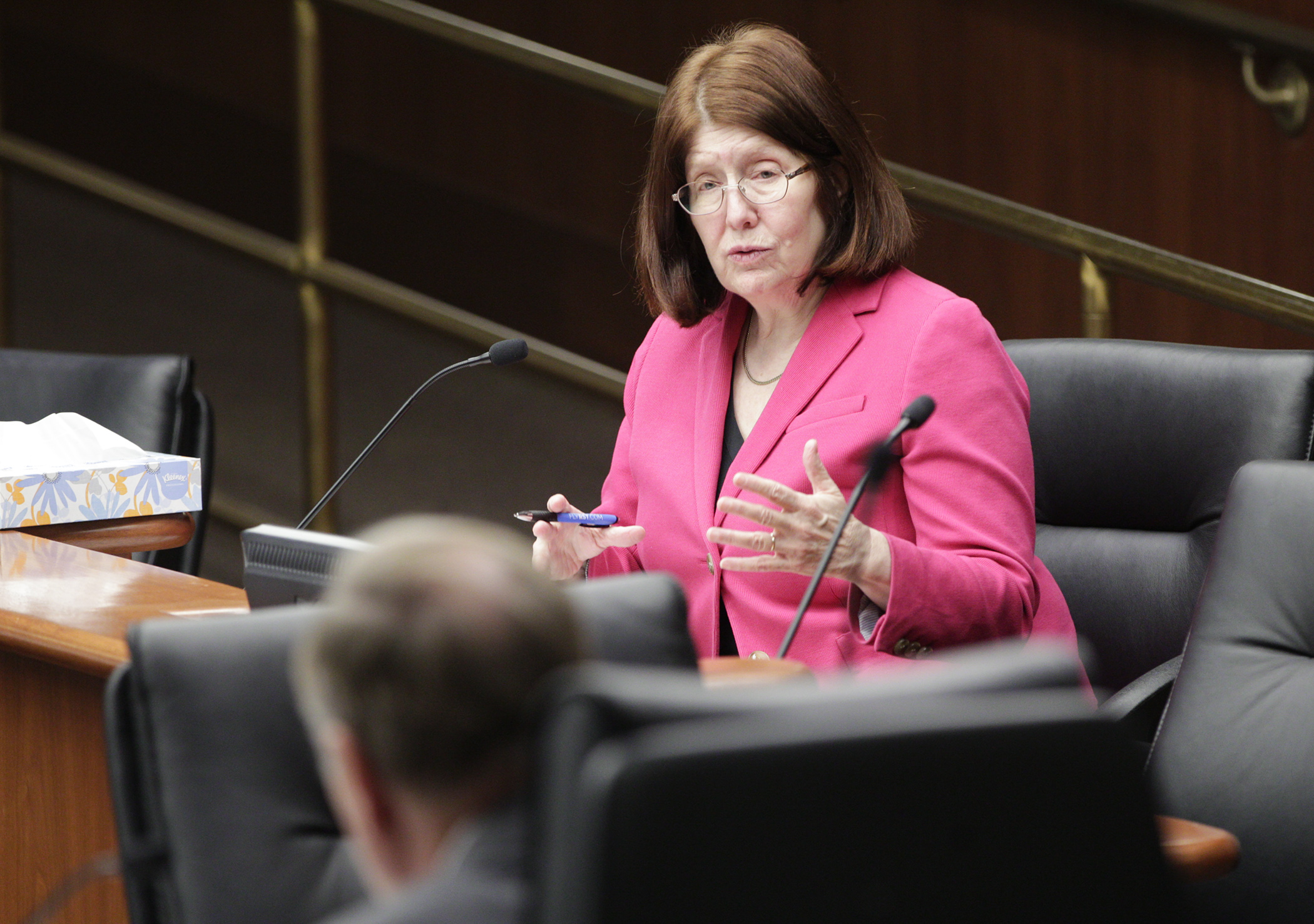Emergency powers, loan program sought for COVID-19 response

With lawmakers working quickly to help ready the state’s response to a potential widespread outbreak of COVID-19, the House Government Operations Committee on Tuesday approved a bill meant to specify the governor’s emergency powers should large-scale measures to combat the virus be needed.
Sponsored by Rep. Tina Liebling (DFL-Rochester), HF4327 would allow the governor to declare a peacetime public health emergency and would also establish a loan program to help health care providers prepare and respond.
The bill’s next stop is the House Judiciary Finance and Civil Law Division. There is no Senate companion.
Liebling said HF4327, which was introduced Monday, is another of the bills rolled out in recent days meant to prepare the state should the spread of coronavirus become a major public health crisis in Minnesota. Lawmakers passed a bill Monday evening that would appropriate $20.9 million to help fund the state’s response. Gov. Tim Walz signed the measure Tuesday.
“In reviewing what is needed, or possibly needed, to confront a pandemic, if we have one, it was recognized that there is little bit of a lack of clarity [in state law] where there is the definition of a peacetime emergency,” Liebling said. “… We don’t want there to be any dispute about that should it become necessary for the governor to exercise certain power such as quarantine.”
The bill would allow the governor to declare a peacetime public health emergency in the same way an emergency can currently be declared during a natural disaster, terrorist attack, industrial or hazardous materials incident, technological failure or civil disturbance that “endangers life and property and local government resources are inadequate to handle the situation.”
A public health emergency is defined in the bill as a determination by the health commissioner that the public’s health “is affected or under imminent threat from pandemic influenza or an outbreak of a communicable or infectious disease that:”
- is reasonably expected to require evacuation of the impacted population, relocation of seriously ill or injured or replacement of essential community services;
- poses a probability of a large number of deaths, serious injuries or long-term disabilities; and
- involves widespread exposure to an infectious agent that poses a significant risk of harm to a large number of people in an affected area or a high rate of sickness or death in the population.
After declaring the emergency, the governor would have powers that include entering contracts, hiring temporary employees, and renting equipment and supplies without having to go through a normal procurement process. The governor could also direct health and law enforcement personnel around the state to provide services.
The bill would allow an extension of the public health emergency for up to 90 days.
Loan program
HF4327 would also establish a health care response loan program to make no- or low-interest loans to health care providers, clinics, facilities and systems for costs to plan or respond to a communicable disease outbreak. The money could be used for things such as staffing, training, supplies, equipment, screening procedures and isolating patients.
Because various bills and proposals to address COVID-19 have been moving very quickly, Liebling said the specifics of the loans are still being worked out, including how the funds would be distributed and repaid.
“The [$20.9 million package] that we passed last night really did not include much, if anything, that would be available to the hospitals or the clinics or the emergency medical services who really could have some pretty heavy expenses if this thing really took off,” she said.
Rep. Bob Vogel (R-Elko New Market) asked if a revolving loan fund could be created, so the loans are paid back and don’t become grants instead.
Liebling said she very much intends to do that and will continue to amend the bill as it travels through the legislative process, but wants HF4327 to strike a careful balance.
“We don’t want to lose health care providers who don’t have cash flow or are suddenly overwhelmed; we want resources distributed across the state where they are needed,” she said. “At the same time we don’t want to just be giving out money … we want a really careful process.”
Liebling said the expectation that the money will have to be paid back is important because it will help direct the money where it is most needed.
Related Articles
Search Session Daily
Advanced Search OptionsPriority Dailies
Ways and Means Committee OKs proposed $512 million supplemental budget on party-line vote
By Mike Cook Meeting more needs or fiscal irresponsibility is one way to sum up the differences among the two parties on a supplemental spending package a year after a $72 billion state budg...
Meeting more needs or fiscal irresponsibility is one way to sum up the differences among the two parties on a supplemental spending package a year after a $72 billion state budg...
Minnesota’s projected budget surplus balloons to $3.7 billion, but fiscal pressure still looms
By Rob Hubbard Just as Minnesota has experienced a warmer winter than usual, so has the state’s budget outlook warmed over the past few months.
On Thursday, Minnesota Management and Budget...
Just as Minnesota has experienced a warmer winter than usual, so has the state’s budget outlook warmed over the past few months.
On Thursday, Minnesota Management and Budget...